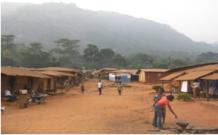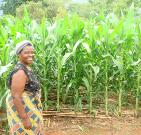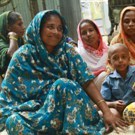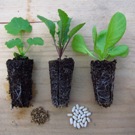September
Bangladesh | Perú | Malawi | Nigeria
Bangladesh | Perú | Malawi | Nigeria
Riparian Forest Management | Mangrove Restoration | Agroforestry | REDD+ | NTFPs
Center for Sustainable Development
September Case Studies:
Forests can provide tremendous environmental services to adjacent communities who suffer from challenges with water: too much water and too little water. Forests help rainwater percolate into soil and into groundwater systems reducing flooding and erosion, and charging village springs. Forests provide protection, livelihoods, food and fuel.
Communities don’t always understand the importance of forests, but it is essential for community members to be at the center of any restoration or conservation effort. They need to be involved in the assessment of forest health, the determination of risks and challenges caused by deforestation, and the design of restoration and conservation projects—and in their co-management. This community based approach builds ownership and the long-term stewardship that is necessary for positive impact and sustainability.
Forest-focused projects developed by CSDi field partners have included:
- watershed reforestation/restoration
- developing community forest conservation groups
- village spring protection through tree planting
- introduction of agroforestry techniques for small scale farmers
- REDD+ projects
- forest conservation for ecotourism
- natural resources management and conservation
- non-traditional forest products for income generation
- community based riparian forest management for flood mitigation
- participatory mangrove restoration for storm protection and income generation
- climate smart agroforestry
- community afforestation
| 1. Forest Reserve Nigeria: REDD+ | NTFPs | Climate Smart Agroforestry | |
 |
Bridget Nkor (Nigeria), Jason Yapp (Malaysia/UK) & Donatella Fregonese (Italy/UK) began developing a project with the indigenous Buanchor community who are the custodians of the Afi Forest Reserve—a habitat for gorilla—and biodiversity hotspot.
|
|
The community is suffering from a loss of environmental services provided by the forest due to forest encroachment and poaching.
The adaptation project includes the development of Non-Traditional Forest Products, a REDD+ forest stewardship program, and a climate smart agroforestry program.
|
|
| 2. Perú: Participatory restoration & conservation of a fragile mangrove ecosystem | |
 |
Sylviane Bilgischer (Belgium/ Perú), Roberta Colombano (Italy/Netherlands), and Carolina Quiroz (Mexico) began developing a project to restore and conserve a fragile Mangrove ecosystem in a village in Perú in January.
|
|
The members of El Bendito are finding it difficult to maintain productive livelihoods due to an increasingly stressed mangrove ecosystem linked to climate change challenges.
Theirs is a protected area for the conservation of mangroves and the community lives through the extraction of hydro biological products—so it is in their interest to restore and conserve the mangrove forest. |
|
| 3. Agroforestry and Conservation Agriculture for Malawi Food Security | |
 |
Jo Thomas (UK/Malawi) and Marina France (US) began developing a food insecurity project in May in the Phalula Village in Malawi.
|
|
770 families face food insecurity as a result of land degradation and soil erosion (largely from deforestation) as well as climate change linked rainfall patterns. Our partners developed an agroforestry income generation program that looks first at identifying markets before choosing agricultural products to plant. |
|
| 4. Bangladesh: Participatory Riparian Forest Management Program | |
 |
3,100 community members of Koliapara village are suffering from the loss of livelihoods, cattle and land for cultivation due to increased flooding.
|
|
Kanika Chakraborty (Bangladesh), Susan Wasubire (Uganda), Lauriane Cayet (Reunion) and Doris Kaberia (Kenya) began developing a project with a disaster risk reduction component in Bangladesh in July.
A participatory riparian forest management program is included in the project design to build the resilience of the community and enhance their capacity to deal with the challenges of recurring disasters.
|
|
 |
In July partners Michael Chew (Australia/Bangladesh), Sabrin Sultana (Bangladesh), and Elijah Mujuri (Kenya) began developing a project with 1,245 people of the village of Putiajani, Bangladesh who are frequently affected by flooding and river erosion caused by the cutting down of trees.
|
|
After thoroughly researching potential project activities our Bangladesh partners developed a project which includes a Participatory Community Afforestation Program.
|
|
| 6. September Resource | 50 Solution-Oriented Program Templates for Challenges in Relief, Development & Adaptation |
 |
Here are a range of solutions in the form of programs and activities that past students have used successfully in addressing project challenges. Feel free to use them, modify them, or develop your own solutions instead. Many of the programs are highly specific to one student’s project and will need to be adapted to fit yours. Many of the programs have multiple activities; these are to give you options for customizing your own programs: edit the activities down as you see fit for your project.
Also, be sure to visit: 153 Student Countries and 270 Project Challenges. |
Would you like to learn how to develop Community Based Adaptation Projects?
What’s happening in the region where you live?
Please write us with your stories, thoughts and comments through Online.Learning@csd-i.org
Please write us with your stories, thoughts and comments through Online.Learning@csd-i.org
I look forward to hearing from you.
Sincerely,
Tim Magee, Executive Director
Would you like to subscribe to this newsletter?
The Center for Sustainable Development specializes in providing sound, evidence-based information, tools and training for humanitarian development professionals worldwide. CSDi is a 501(c)(3) nonprofit organization.
